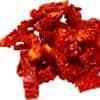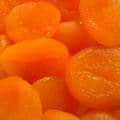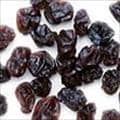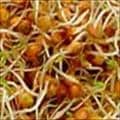
This excerpt (from Chapter 13) tells the sad story of how millions of Americans are plagued by a mysterious constellation of symptoms but don't know what's wrong with them -- and often, neither do their doctors. Unfortunately, the physicians and loved ones of these ailing millions often wrongly assume that they're "hypochondriacs" or that they have a mental disorder. Worse yet, they think these symptoms are indicative of another disease or condition.
Instead, these suffering millions may be victims of SUGAR SHOCK! They're suffering from reactive hypoglycemia, a condition that's often maligned and dismissed by members of the mainstream medical establishment. But cutting-edge nutritionists and medical practitioners contend that hypoglycemia (low blood sugar) is rampant today and usually triggered by excessively consuming sweets or processed carbohydrates -- something most Americans do.
Tragically, people who suffer from hypoglycemia are often misdiagnosed for years -- and even frequently advised to seek psychiatric counseling and/or take psychiatric drugs. But usually the best treatment for hypoglycemia is quite simple: Just kick all sugars and processed, "culprit carbs," and eat modest amounts of nourishing, wholesome foods five or six times a day.
More information about the book, SUGAR SHOCK!, and author Connie Bennett follows the excerpt. Thanks for your interest in this important and provocative subject.
Hypoglycemia - A Hidden Hell
by Connie Bennett, C.H.H.C., author, SUGAR SHOCK!From Chapter 13: It Might Not Be "All In Your Head": What Your Doctor Doesn't Know or Believe About Hypoglycemia (pp. 191-213).
"Bipolar II with psychotic episodes." That's the diagnosis a psychiatrist handed Stephanie B. of Chico, California, when she was 23 years old.
By the time a psychiatric hospital rendered the "bipolar" verdict, Stephanie had spent a decade trying to pinpoint the cause of her depression, mania, panic attacks, anxiety, fatigue, temper outbursts, excitability, psychotic-like episodes, confusion, concentration problems, and headaches. These symptoms disabled her so thoroughly that at times she couldn't get out of bed and she had to drop out of school four times.
Physicians, psychologists, and psychiatrists were particularly mystified by Stephanie's strange, scary panic attacks -- like the time when, after skipping a meal and rushing to a physics class, her legs wouldn't budge and she felt stuck in the deep end of a swimming hole. Or the incident when she started to hyperventilate while driving down a six-lane highway, developed "extreme tunnel vision," and had to pull over to avoid collision with an oncoming car.
Doctors prescribed medications to help her cope -- a litany of drugs that reads like a pharmacology manual: Zoloft, Depakote, Risperidol, Imipramine, Klonopin, BuSpar, Paxil, Trazodone, Ativan, and Ambien. But the meds helped to bring about another problem. In a year and a half, the 5-foot, 10-inch Stephanie ballooned from "anorexic looking" to 215 pounds.
Curiously, not one in the succession of doctors she saw ever asked Stephanie about her diet, which included many inferior, fiber-stripped, nutrient-poor, empty-calorie dessert foods and processed carbs and starches such as pasta, corn tortillas, corn chips, blueberry muffins, sweet rolls, cookies, smoothies, croissants, pizza, and bagels.
On several occasions, she even asked her doctors if she had a blood sugar problem. "I'd explain that if I didn't eat at crucial moments in my day, I'd turn irritable and get a devastating headache. But the doctors paid no attention," she recalls. "Once in a while, they'd give me a blood sugar test right then -- when I wasn't having any symptoms -- and, of course, my results would come back normal."
Meanwhile, as her twenties slipped by, Stephanie's distress continued, especially near that time of the month. "I was putting everything down to PMS," she says. "I'd have horrible mood swings, cramps, bloating, and migraines for a week out of every cycle...."
Finally, ...just before her 31st birthday, after some 20 years of anguish and agony, Stephanie learned the cause of her problems, but not from a medical doctor. Instead, a nutritionally savvy acupuncturist who'd been treating her for a dog bite suspected that Stephanie might have reactive hypoglycemia or low blood sugar caused by her diet high in sugars and refined carbs.
Almost immediately, Stephanie stopped eating processed carbs and desserts. Instead she had meals and snacks with protein, healthy fats, vegetables, some low-sugar fruits, and whole grains. Within days, her health dramatically improved.
"Eating right banished all my symptoms including depression and mood swings," she marvels. "It even helped me get rid of my constant hunger and excess weight. And I've discovered a whole new world of tasty, healthy foods."
Hypoglycemia: "The Great Imitator"
Stephanie's story is not so unusual. Quite the opposite.
In fact, I believe, as do a number of medical experts, that reactive hypoglycemia is one of the most common and misunderstood disorders in America today. For starters, many physicians assume that ailments such as mood swings, fatigue, and anxiety are manifestations of psychological problems.
Moreover, hypoglycemia has been called the "Great Imitator" because its strange, startling symptoms -- some experts list as many as 125 of them -- can mimic a frightening array of diseases and conditions, including bipolar disorder, schizophrenia, neurosis, migraines, Parkinson's syndrome, chronic bronchial asthma, paroxysmal tachycardia (rapid heartbeat), rheumatoid arthritis, cerebral arteriosclerosis (hardening of the brain's arteries), menopause, mental retardation, alcoholism, hyperactive disorder, and senility.
Given the vast array of symptoms and the confusion they can generate, doctors often shrug away patients' complaints as the imaginings of a hypochondriac in dire need of psychiatric help.
"Every time I went to the doctor for any reason, he or she would do a few tests and tell me that it was 'all in my head,'" laments Linda K. of Gatesville, Texas. "The doctors would say that I was extremely healthy and then try to get me to set up an appointment with a psychologist or psychiatrist. I would get very mad and hardly ever go to the doctor, because I know they would find nothing... I must have had hypoglycemia all my life, but I wasn't diagnosed until I was 34..."
Stephanie's, Linda's, and my stories are typical of many people with reactive hypoglycemia: We get misdiagnosed again and again in a cycle that could continue for decades unless we're lucky enough to find a knowledgeable, open- minded health practitioner.
Obviously, not all patients with anxiety, depression, heart palpitations, migraines, and other symptoms have hypoglycemia -- they could have other very real conditions -- but if they do have low blood sugar, it can be a revelation and relief to learn about it.
What Is This Condition that Confuses Even Doctors?
So what exactly is this medical condition that fools so many doctors so easily and leaves agonized patients without relief for years? First of all, remember that our bodies -- and especially our brains -- need glucose to survive. Low blood sugar or "hypoglycemia" ("hypo" [is] low and "glycemia" [is] blood sugar) means that your blood glucose drops too low for you to be able to go about your daily activities.
This can happen because your body uses up glucose too rapidly, releases it into the bloodstream too slowly, or calls upon your pancreas to manufacture too much insulin. (Insulin is the vital hormone that removes sugar from your bloodstream.) When any of these things happen, your blood glucose becomes abnormally low, and you become confused, irritable, spacey, lightheaded, and more.
This glucose deprivation also causes many people to become famished. But it doesn't stop at hunger. "Perhaps most importantly, low blood sugar triggers an outpouring of counterregulatory hormones, mostly from the adrenals," observes Ronald Hoffman, M.D., founder of the Hoffman Center in New York City, host of the nationally-syndicated radio program, Health Talk, and author of the book,Tired All the Time?
"These hormones oppose the action of insulin and push blood sugar back up. Unfortunately for the hypoglycemic, these 'rescue' hormones are the very same ones that produce the adrenaline rush of a fight-or-flight reaction. The results are symptoms like heart palpitations, sweaty palms, nervousness, tremor, and sometimes even full-blown panic attacks," Dr. Hoffman explains...
Hypoglycemia: A Potential Prelude to Diabetes [Short Excerpt]
Although it's not universally acknowledged, clinical evidence suggests that people with long-term hypoglycemia are headed toward diabetes....This shouldn't be too surprising, since both hypoglycemia and diabetes are related to blood sugar problems. Whether you're suffering from low blood sugar (hypoglycemia) or diabetes (high blood sugar), you can't properly assimilate or tolerate sugars or starches because of underlying blood sugar imbalances....
Cynthia Geyer, M.D., ...Director of Women's Health at Canyon Ranch health resort in Lenox, Massachusetts, puts it [this] way: "Hypoglycemia can be one of the manifestations of insulin resistance...which may reflect an 'overshoot' phenomenon characterized by a large spike in insulin, followed by a drop in blood sugar. Over time, repeated insulin spikes may lead to a decrease in pancreatic reserve, or more insulin resistance."
Keith DeOrio, M.D., [the integrative physician in Santa Monica who correctly diagnosed my hypoglycemia after I endured years of hellish symptoms], further describes the sequence that could lead to type 2 diabetes: "The brain craves more glucose so you consume more simple carbs to get your blood sugar back up again," he says. "You get into this vicious cycle of low sugar, high sugar, low sugar, high sugar, low sugar, high sugar. And that taxes your pancreas, which then leads to either insulin deficiency or to greater insulin resistance and, therefore, type 2 diabetes. Diabetes really is chronic hypoglycemia."
Hypoglycemia is Rampant, Not Rare [Short excerpt]
Just how many Americans suffer from reactive hypoglycemia? ..."If you ask a conventional physician, hypoglycemia is a rare, practically nonexistent malady," Dr. Ronald Hoffman observes. "...But the truth is that hypoglycemia is far more prevalent than we're led to believe."
Internist and integrative physician Richard N. Ash, M.D., agrees. "Low blood sugar is not rare. It's probably rampant.... Hypoglycemia is basically triggering the obesity epidemic in this country, because people are overeating after their blood sugar drops and they can't stop."
...Integrative physician Keith DeOrio, M.D. insists that "Low blood sugar probably affects 50 percent of the U.S. population, if not more." The authors of "Hypoglycemia: The Classic Healthcare Handbook" also suggest that half the U.S. population suffers from hypoglycemia.
In 1966-1967, the U.S. Department of Health, Education, and Welfare found that 49.2 percent of the people interviewed had hypoglycemic symptoms, as cited by William Dufty in his book, "Sugar Blues." Some experts suspect that the figures are still the same, if not higher, with about half of all Americans suffering from low blood sugar.
[Often, the culprit for low blood sugar or hypoglycemia is that you're eating too much sugar and refined carbs.] Ann Louise Gittleman, Ph.D., C.N.S., author of "Get the Sugar Out: 501 Simple Ways to Cut the Sugar Out of Any Diet," warns of the dire consequences that result from downing enticing desserts year after year. "Since almost all Americans eat too much sugar, many nutritionists think that most Americans are on an almost certain collision course with hypoglycemia."
The Doctors of Disbelief [Short Excerpt]
...Why are physicians so reluctant to identify this condition? "We haven't been teaching our physicians correctly," explains endocrinologist Diana Schwarzbein, M.D., author of the popular Schwarzbein Principle books on weight loss. "They're used to identifying diseases with known causes. Doctors have no problem believing in hypoglycemia when it's 'disease related' -- say, liver or kidney failure, or tumors in the pancreas..."
...When asked why doctors discount reactive hypoglycemia's existence, James Chow, M.D., coauthor of Hypoglycemia for Dummies, notes that "part of the reason is that there are no viruses or anything concrete that one can point to, and the symptoms are too general and nonspecific.
"Also, hypoglycemia is not a disease per se, but a condition that is managed through dietary and lifestyle changes -- not something doctors are taught in medical school. If it's not a disease entity for which they can write a prescription, then they don't think it exists," he observes.
Paltry Nutrition Education for Physicians
Interestingly, critics claim that one of the main reasons physicians aren't adept at identifying hypoglycemia, malnutrition, or other nutrition-related illnesses is because the nutrition education they receive in medical school is quite lacking.
"Nutrition training in medical schools is almost nonexistent to substandard," decries renowned alternative medicine practitioner Andrew M. Weil, M.D., author of the national bestsellers Spontaneous Healing and 8 Weeks to Optimum Health, and other books.
"I've looked at what they teach. Most of the nutrition is buried in biochemistry courses... The training still lasts just a few hours," says Dr. Weil, who admits that he himself "received essentially no education in nutrition in four years of Harvard Medical School and an internship but pursued further nutrition training on his own. "It's fair to say that the majority of physicians are functionally [nutritionally] illiterate," he concludes.
Physician Fred Pescatore, M.D., [who is also a certified clinical nutritionist] believes that the nutritional training doctors get is "completely inadequate and quite appalling.
"Most physicians are nutritionally unbalanced themselves," contends Dr. Pescatore, who is president of the International and American Association of Clinical Nutritionists... "When you go to a physician who's not properly trained and expect to get expert nutritional advice, you're only fooling yourself."
NOTE: This chapter about hypoglycemia also reveals other eye-opening information and startling stories. For instance, it explains how patients today are frequently misdiagnosed; how cutting-edge doctors are appalled by their colleagues' ignorance; how hypoglycemia was "discovered" in 1924 by Seale Harris, M.D., but his findings were attacked and ignored; and how in 1973, the condition was dismissed as a "nondisease" by the American Medical Association, the American Diabetes Association and the Endocrine Society. In addition, the chapter tells the tragic tale of blood sugar sufferer Roberta Ruggiero, who was misdiagnosed for years and even wrongly administered electroshock therapy and later founded the Hypoglycemia Support Foundation (HSF), which now helps millions worldwide. The chapter also discusses an intriguing survey showing the hypoglycemia-diabetes connection; cites evidence, which suggests that there's a link between alcoholism and low blood sugar; points out how the incidence of hypoglycemia among our nation's young is skyrocketing; provides a lengthy list of hypoglycemia symptoms; explains how to get a valid diagnosis of hypoglycemia; and more.
About the Author
 Connie Bennett, M.S.J., C.H.H.C. is an experienced journalist and former sugar addict, who now jokingly calls herself an "Ex-Sugar Shrew!" She has helped thousands of "sugar sufferers" around the world to break free of their debilitating, destructive habit. She founded the acclaimed SugarShockBlog.com and SugarShock.com; the online, international KickSugar support group (on Yahoo!); and the 21-Day, Stop SUGAR SHOCK! Diet(TM). Connie's list of credits is impressive -- she has contributed to numerous media outlets, including eDiets.com, SheKnows.com, the Los Angeles Times, Chicago Tribune and the Fort Worth Star-Telegram. She has a master's degree in journalism from Northwestern University, and she is a certified holistic health counselor, who studied at the Institute for Integrative Nutrition. Connie Bennett, M.S.J., C.H.H.C. is an experienced journalist and former sugar addict, who now jokingly calls herself an "Ex-Sugar Shrew!" She has helped thousands of "sugar sufferers" around the world to break free of their debilitating, destructive habit. She founded the acclaimed SugarShockBlog.com and SugarShock.com; the online, international KickSugar support group (on Yahoo!); and the 21-Day, Stop SUGAR SHOCK! Diet(TM). Connie's list of credits is impressive -- she has contributed to numerous media outlets, including eDiets.com, SheKnows.com, the Los Angeles Times, Chicago Tribune and the Fort Worth Star-Telegram. She has a master's degree in journalism from Northwestern University, and she is a certified holistic health counselor, who studied at the Institute for Integrative Nutrition.
About the Book
 SUGAR SHOCK! SUGAR SHOCK!
How Sweets and Simple Carbs Can Derail Your Life --
And How You Can Get Back on Track
by Connie Bennett, M.S.J., C.H.H.C.,
with Stephen T. Sinatra, M.D.
Foreword by Nicholas Perricone, M.D.
Published by Berkley Books
(397 pages, paperback, ISBN 978-0-425-21357-5, $14.95 U.S./$18.50 CAN)
Available through this site or the author's sites:
SUGAR SHOCK! website --http://www.sugarshock.com
SUGAR SHOCK! Blog -- http://www.sugarshockblog.com
KickSugar Support Group -- http://groups.yahoo.com/group/kicksugar
A provocative expose of the negative effects of sugars and simple carbs -- and how to break the addiction.
There's no sugarcoating it: Succumbing to sweets too often could damage your health. But to what extent? You probably already know that eating a lot of sugar and other "quickie carbs" can bring on serious conditions like obesity and diabetes. But did you know that these are only two of a host of maladies -- such as "brain fog," fatigue, mood swings, heart disease, and even cancer -- which millions may be suffering because of their sugar or carb habits?
Once besieged by 44 seemingly unconnected symptoms, former "sugar addict" Connie Bennett learned the truth the hard way. Restored to good health and humor just by kicking sweets and simple carbs in 1998, Connie -- an experienced journalist -- uncovered extensive medical research, which proves that people (i.e., most Americans) who eat too many low-caliber culprit carbs could be in SUGAR SHOCK!
Based on the insights of thousands of physicians, nutritionists, researchers, and "sugar sufferers" worldwide, SUGAR SHOCK! reveals the sour scoop about sweets and shows you how to break free with easy tips and tactics so that you can improve your health, perk up your moods, boost your libido, and regain control of your life.
Praise for SUGAR SHOCK!Dozens of doctors, nutritionists, and celebrities have endorsed SUGAR SHOCK! See http://www.SugarShock.com or http://www.SugarShockBlog.comfor a complete list.
"...trots out a Who's Who of prominent nutritionists who support Bennett's argument that sugar is the road to physical ruin..."
-- TIME Magazine
"Read this book. It could save your life."
-- Mark Hyman, M.D., author of the New York Times bestsellerUltraMetabolism
"...must reading..."
-- Arkansas Governor Mike Huckabee
"I wholeheartedly recommend SUGAR SHOCK!"
-- Film producer Harvey Weinstein
"Wow! This is an impressive, exceptional expose and self- help work!"
-- "Nutritionist to the Stars" Oz Garcia, Ph.D., author of Look and Feel Fabulous Forever
"You're hooked from the first chapter..."
-- Barbara DeAngelis, Ph.D., author of the #1 New York Times bestseller,Secrets About Men Every Woman Should Know
Copyright (c)2007 by Connie Bennett, founder,http://www.SugarShock.com and http://www.SugarShockBlog.com. From SUGAR SHOCK! (Berkley Books). All Rights Reserved. Please feel free to duplicate or distribute this file as long as you provide all credits and as long as the contents are not changed and this copyright notice is intact. |



 Connie Bennett, M.S.J., C.H.H.C. is an experienced journalist and former sugar addict, who now jokingly calls herself an "Ex-Sugar Shrew!" She has helped thousands of "sugar sufferers" around the world to break free of their debilitating, destructive habit. She founded the acclaimed SugarShockBlog.com and SugarShock.com; the online, international KickSugar support group (on Yahoo!); and the 21-Day, Stop SUGAR SHOCK! Diet(TM). Connie's list of credits is impressive -- she has contributed to numerous media outlets, including eDiets.com, SheKnows.com, the Los Angeles Times, Chicago Tribune and the Fort Worth Star-Telegram. She has a master's degree in journalism from Northwestern University, and she is a certified holistic health counselor, who studied at the Institute for Integrative Nutrition.
Connie Bennett, M.S.J., C.H.H.C. is an experienced journalist and former sugar addict, who now jokingly calls herself an "Ex-Sugar Shrew!" She has helped thousands of "sugar sufferers" around the world to break free of their debilitating, destructive habit. She founded the acclaimed SugarShockBlog.com and SugarShock.com; the online, international KickSugar support group (on Yahoo!); and the 21-Day, Stop SUGAR SHOCK! Diet(TM). Connie's list of credits is impressive -- she has contributed to numerous media outlets, including eDiets.com, SheKnows.com, the Los Angeles Times, Chicago Tribune and the Fort Worth Star-Telegram. She has a master's degree in journalism from Northwestern University, and she is a certified holistic health counselor, who studied at the Institute for Integrative Nutrition.
















